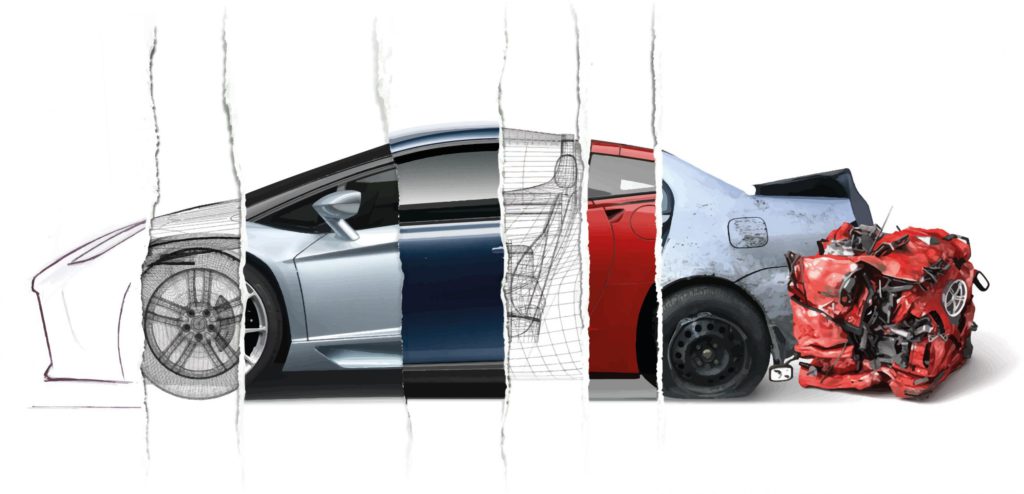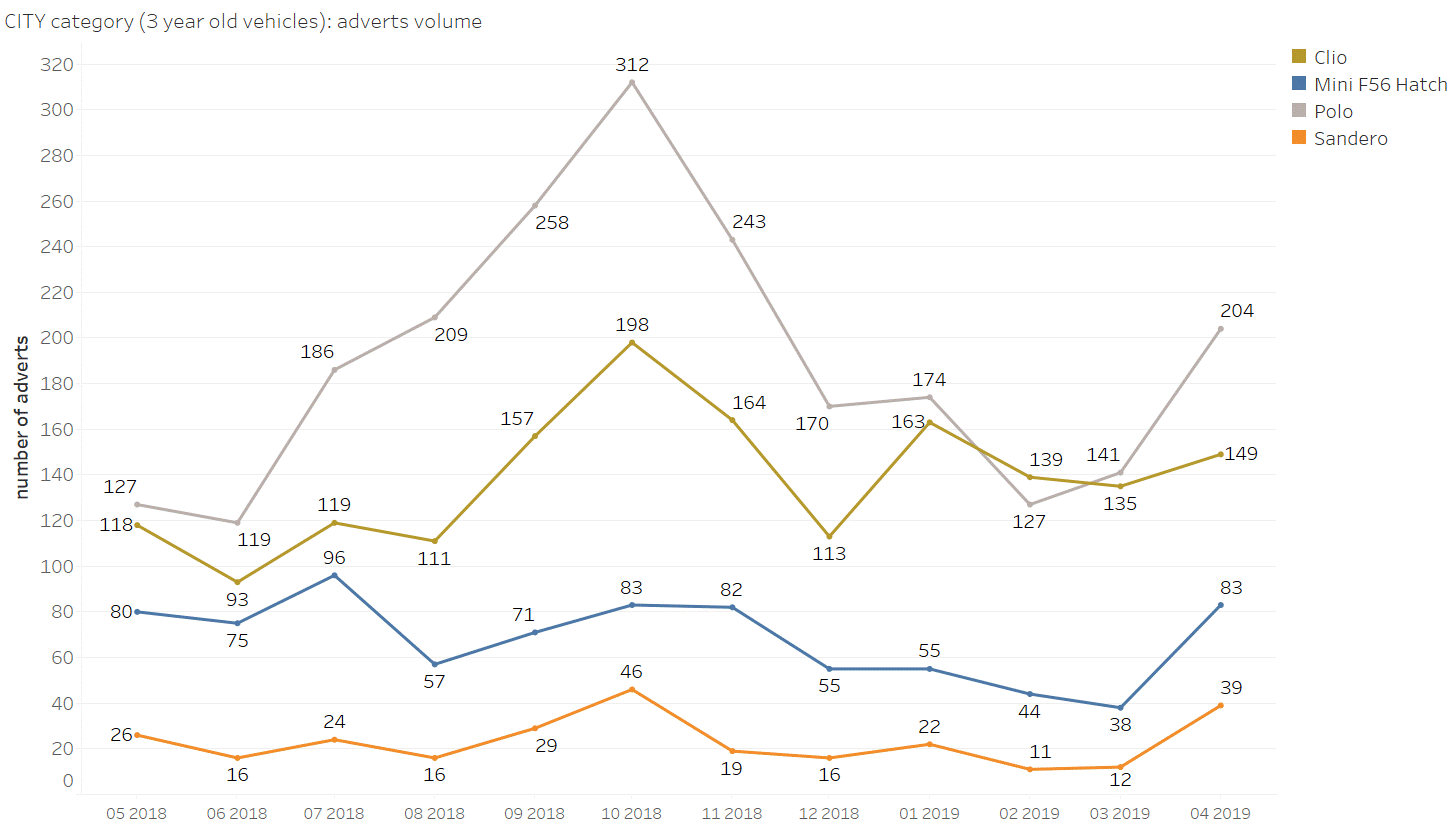Do cheaper brands have a RV advantage over premium players?
20 December 2019

20 December 2019
Robert Madas, Valuations and Insights Manager, Austria/Switzerland, Eurotax
The Eurotax Award for the car models with the best residual values (RVs) is eagerly awaited each year in Austria and Switzerland. A look at the 2019 winners, announced in Austria on 16 May and in Switzerland on 26 September, raises the question whether the awards criteria generally favour cheaper brands. After all, Dacia was able to win three prizes this year: in Austria in the “City” category and in Switzerland in the “City” and “SUV” categories. Furthermore, the Å koda Octavia took first place in the ″Business″ category in Switzerland for the fourth year in a row.
The awards criteria are the same for all vehicles. Eurotax compares three-year-old cars, with standard equipment and standardised mileage, which were regularly traded on the market over the preceding 12 months (Switzerland: six months). The residual values ″‹″‹are compared as percentages of the original list price. The award is given to the three-year-old vehicles with the highest residual values in each category.
The comparison of residual values ″‹″‹in percentage terms, instead of a ranking in Euros or Swiss Francs, ensures that neither cheap nor expensive vehicles have a methodological advantage. Clearly only a vehicle with a good, stable RV performance, measured as a percentage of value retention, can become a champion.
When considering the residual value of a vehicle solely in relation to the list price, it appears at first glance that cheaper vehicles generally have stronger residual values. Analysis of data from Austria (as of November 2019) seems to confirm this, since the cheapest vehicles (up to €15,000) have the highest residual value retention on average. However, vehicles in the middle price segment, from €30,000 to €60,000, perform significantly worse than more expensive vehicles priced from €60,000. Even the most expensive price segment (€90,000 and more) achieves slightly higher residual values ″‹″‹on average.
However, this simplified approach of considering only a single variable, namely the list price, is inadequate and false as the residual value of a vehicle is influenced by a variety of factors. Among other things, the volume of supply, the demand situation and, last but not least, discounts play an important role. Discounts in particular have a direct impact on the residual value, since the reduction from the list price cannot be later recovered in the used-car market. The manufacturer’s strategy with regard to short-term registrations and volumes in the rental channel also has a direct impact on supply in the used-car market – and therefore also on the used-car price and residual value.
Another important criterion influencing RVs, and therefore the chance to become RV champion, is the manufacturer’s strategy for remarketing fleet vehicles and returns from the leasing channel. The better the volumes of three-year-old vehicles are adapted to market demand, the more favourable the conditions are for high RVs. The main levers are the attractiveness of the vehicle itself (image, equipment, desirability) as well as the remarketing strategy (too high volumes lead to decreasing prices). As long as supply meets demand, residual values will stay high. If there is an oversupply, even only temporarily, the residual value will suffer.
As a prime example, the top two Austrian RV champions in the “City” category (Dacia Sandero and Mini) had a significantly lower number of adverts during the observation period than the VW Polo and Renault Clio, which did not make it into the top 10 in the awards. Above all, the volume of offers was more constant and showed significantly fewer fluctuations (see the chart below). The Dacia Sandero and the Mini are positioned completely differently, in terms of both image and price. Both models achieve high residual values ″‹″‹(regardless of the list price) as they are successfully positioned for a specific target group and are therefore less easily substituted. This starts, of course already in the new-car market and continues in the used-car market.
Number of adverts, City category, three-year-old vehicles, May 2018 to April 2019

A closer look at the top three in the Austrian RV awards in the last two years reveals that models with the lowest list price do not always achieve the highest residual values (see tables below). In the “Business” category, the Å koda Octavia (with an average list price of less than €30,000 in 2016) ranked behind the Mercedes-Benz CLA, which has a significantly higher list price (around €40,000). In the “SUV” category, the Audi Q2 (list price around €32,000) came out well ahead of the Seat Ateca (list price around €29,000) and the Dacia Duster (list price around €16,000).
In Switzerland, the Mercedes GLC plug-in hybrid (list price around CHF63,000) won the award, narrowly beating the Tesla’s Model S (list price around CHF95,000) in the new “Plug’n’Drive” category for plug-in hybrids and battery-electric vehicles. This is especially remarkable as the Nissan Leaf and Renault Zoe are in the same category – both have a list price of around CHF30,000 but have significantly lower RVs.
Residual values are therefore by no means predominantly dependent on the list price but depend on different factors, many of which can be positively influenced by an appropriate model and pricing strategy as well as good remarketing and not least by a strong dealer network.
The 2019 award winners in Austria:
|
Category |
Winner |
RV |
2nd place |
RV |
3rd place |
RV |
|
City |
Dacia Sandero |
70.3% |
Mini |
64.7% |
Suzuki Swift |
63.9% |
|
Business |
Mercedes-Benz CLA |
62.7% |
Å koda Octavia |
61.8% |
BMW 4-Series GranCoupé |
61.7% |
|
SUV |
Audi Q2 |
72.1% |
Seat Ateca |
70.0% |
Dacia Duster |
68.9% |
The 2019 award winners in Switzerland::
|
Category |
Winner |
RV |
2nd place |
RV |
3rd place |
RV |
|
City |
Dacia Sandero |
65.7% |
Honda Jazz |
59.9% |
Suzuki Swift |
55.7% |
|
Business |
Å koda Octavia |
54.2% |
Subaru Levorg |
54.0% |
VW Passat |
48.7% |
|
SUV |
Dacia Duster |
66.7% |
Seat Ateca |
65.2% |
Porsche Macan |
62.3% |
|
Plug ″šn′ Drive |
Mercedes-Benz GLC Plug-in hybrid |
60.2% |
Tesla Model S |
59.7% |
Mercedes-Benz GLE Plug-in hybrid |
56.3% |